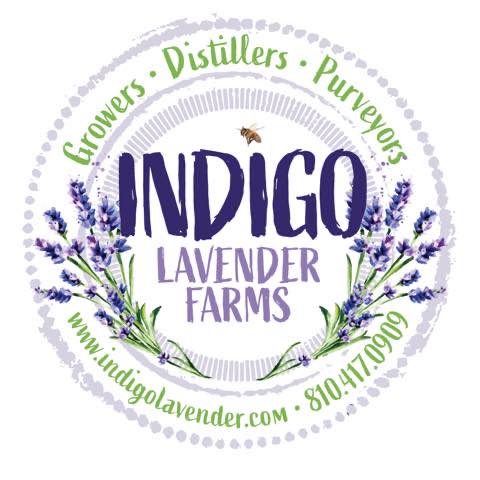Follow Us x
A FAMILY OWNED FARM THAT IS MORE THAN A HOBBY - IT'S A LIFESTYLE
In 2015 after a lot of research, we began planting lavender. In our first year, we had just under 4,000 plants. By 2018 we added over 10,000 plants. The farm itself is 50 acres; home to the 14,000+ plants, farm store, greenhouse, garden, chicken coop, wetlands and more. We grow our plants without pesticides or other chemicals. Lavender is naturally drought- and pest-resistant however, we must weed and nurture our plants by hand to ensure their health and productivity.
We have 9 varieties of Lavender on the farm: 6 lavandula angustifolias and 3 lavandula x. intermedia.
Lavandula is a genus of 47 known species of flowering plants in the mint family.
The most widely cultivated species is Lavandula angustifolia (English Lavender). Types of Lavandula angustifolia on the farm; Hidcote, Big Time Blue, Melissa, Rosea, Royal Velvet and Munstead.
Lavandula x. intermedia, also called Lavandin, is a hybrid cross between Lavandula angustifolia and Lavandula latifolia (Portuguese Lavender). These plants tend to grow a bit larger than English Lavender. Types of Lavandin on the farm; Grosso, Phenomenal and Edelweiss.
The North Hill
Planted in 2017, this field contains roughly 3,500 Phenomenal variety lavender plants. Phenomenal is a taller variety, reaching 24-36 inches and has a beautiful bright purple color. This variety is perfect for home décor and culinary uses. Phenomenal also tends to over winter well. We typically do not have to supplement Mother Natures water in this field, this variety is pretty hardy and does not need much water.
The Meadow
Planted in 2017, this field contains about 2,100 of the Big Time Blue lavender plant variety. Big Time Blue is one of our early bloomers, typically starting at the end of June. It has a beautiful purple color that dries nearly blue. The Meadow is the inspiration for our "Pine in the Meadow" scent in many of our products. We will often see a second bloom on this variety in late August or early September.
Field 1
This was the first field planted on the farm! In 2015, we planted 3,200 in several different varieties; Phenomenal, Rosea, Royal Velvet, Hidcote, Melissa and Edelweiss. Some of these varieties are a bit more fragile and do not do so well in our harsh Michigan climate. We have added Folgate in 2021 to test this variety. Did you know not all lavender is purple? Can you spot the varieties in this field that are NOT purple?
Field 2
Planted in 2016, this field contains many different varieties of lavender; Grosso, Rosea, Hidcote Blue, Phenomenal, Folgate & Hidcote Giant. There are about 1,150. This field is considered our "test plot". We try out different varieties of lavender to determine which over winter best, are best for oil production, and are the best for culinary purposes. Take a moment to check out each plant, see if you can pick out what is different about each. Smell, color, height? We enjoy studying the different varieties!
Field 3
Planted in 2016, this field contains roughly 1,250 Grosso lavender plants. 100% of this field is used for oil production. During the summer, the lavender is harvested and distilled to produce our lavender oil. Lavender can be used in a wide variety of therapeutic treatments.
Field 4
Planted in 2016, this field contains 3 varieties; Grosso, Hidcote Blue & Phenomenal. There are approximately 3,200 plants in this field. We are actively replacing Grosso with Hidcote Blue plants allowing us to offer more of this variety on the farm. Grosso will remain in Field 3 for oil production.
Garden & Greenhouse
The garden was started in 2020 with several varieties of vegetables, herbs and some fruit. Our chickens and peacocks enjoy a treat from the garden now and then. We also use some of the herbs in our products. Planting began in the greenhouse in early 2021. Offering cut flowers such as: tulips, ranunculus and anemone. Baby lavender plants are also cultivated in the greenhouse.
Feathered Friends
In 2018 several varieties of feathered friends join our Indigo family. Silkies, Chickens, Ducks and even Peacocks enjoy the Southwest corner of the farm. Silkies are a breed of chicken named for their fluffy plumage which is said to feel like silk and satin. Our hens need their privacy as they are laying eggs daily. Please do not enter their coop or climb on their fencing. Why do some of our silkies stay in the pen and not free range like the others? Silkies are considered a Bantam chicken, which is much smaller than the rest of the chicken friends in our flock. Silkies are quite docile and have a hard time defending themselves against larger fowl and predators. They are also terrible fliers and can't reach the same safe heights as our other feathered friends. So in order to keep our silkies safe and happy, we keep the hens and a couple roosters in the pen full time. The other larger white silkies that you see outside the pen are roosters.
Honey Bees
Our Honey Bees have three locations on the farm and are hard at work making our delicious Lavender Honey. Indi Bee asks that you help keep her friends happy by letting them continue their work peacefully - - watch don't swat! There are nearly 1/2 million pollinators on the farm and are an important part of the farm eco-system.

